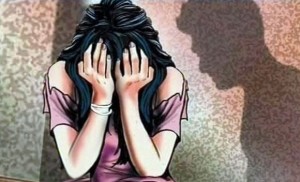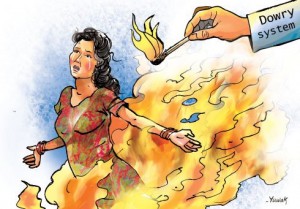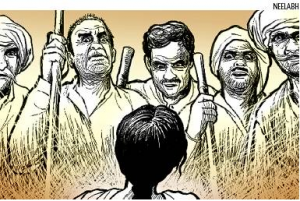In this Blog Post, Sakshi Bhatnagar, a student of National Law University Odisha, Cuttack writes about the position of crime reporting of offenses committed against women in India. She presents this data with statistical proof.
Crime statistics are imperative and crucial inputs for evaluating the personal satisfaction and human rights circumstance. In the general public, such reports are used by authorities at various levels for the purpose of framing new policies, and ascertaining the position of current ones. In any case, this framework has not been investigated over time from the perspective of scope, exactness, opportuneness and importance.[1]
With an aim of comprehensive improvement of the statistical system in the country, a mechanism called the ‘Conference of Central and State Statistical Organisations’ (COCSSO) was set up by the Ministry of Statistics & Programme Implementation. Reporting on crime and criminal justice help Governments to assess and monitor the conditions, circumstances, and trends of the well-being of the society and the social impact of public expenditures and policies. The collection of reliable and comprehensive criminal justice statistics in countries is of immense importance to everyone involved with criminal justice, especially to the criminal justice administrator.
Violence Against Women and Recording and Reporting of Violence Against Women
Crimes against women have been a barrier to complete development of the society and the situation is not unknown to any authority. The reluctance of public authorities to deal with it are long-standing themes of public debate in India. They have been part of India’s Public Policy agenda since the landmark rape case in 1972 of a teenage girl known only as Mathura.[2] Another highly publicized case that apparently paved the way for new implantations in legal procedure was the Nirbhaya case that happened 40 years after the above cited Mathura case in 2012. The response of the appropriate authorities was, despite such a long gap, was more or less the same, of reluctance. They leave no doubt that violence against women is a serious challenge to Indian society, law enforcement, and judicial affairs. These extremely publicized incidents focus attention on the widespread however poorly .understood downside of violence against women. 
Internationally, violence against women is recognized as ‘one of the most systematic and widespread human rights violations.[3] One reason of this may be that violence is rooted in the gendered and social structures instead of random acts done by individual minds; and ‘cuts across age, socio-economic, educational and geographic boundaries; affects all societies, and is a major obstacle to ending gender inequality and discrimination globally.[4]
In international rankings, India’s overall rate of reported lethal violence is low to mid-level, compared to far off societies such as Brazil, the Russian Federation, or South Africa.[5] India’s low rate of national violence, however, conceals it’s large absolute scale, with an annual average of 35,848 violent deaths of men and women between 2007 and 2012.[6]From a sexual orientation point of view, these insights give just an impression of viciousness against women
The key figures for violent crimes against women in India are the annual statistics released by the National Crime Records Bureau (NCRB). As a police agency operating under the Ministry of Home Affairs, the NCRB is responsible for all official, national crime statistics, relying on data submitted by state and city law enforcement agencies’.[7] In 1989,a separate section on ‘Crimes against Women’ was introduced by the agency to its annual report. In this section, acts of violence against women are recorded under two separate categories: the Indian Penal Code (IPC), and crimes recorded under specific gender laws, called the Special and Local Laws.[8]
NCRB reporting also involves judgments by police about the causes of a crime—a problem most evident in certain categories, such as motives for sexual affairs or killings due to allegations of witchcraft which raises questions about misreporting.[9]
Gendered Underreporting
Underreporting by law enforcement agencies of violent crime against women is a global concern.[10]By adequately disguising the genuine size of the issue, underreporting redirects open and political consideration, accordingly hindering conceivably viable reactions. Evidence of massive underreporting in India comes from a study in 2010 that found that approximately 66 percent of New Delhi’s women had been sexually harassed during the previous year, on an average of two to five times.[11]The weakness of Indian crime data, especially poor reporting and lack of comprehensiveness, limits insights into all aspects of Indian violence and acts as a challenge to complete societal development.
As per the data available, the NCRB reported just 82 cases of infanticide nationwide in the year 2014—a remarkably low figure for such a large country.[12]The concept of missing women in Asia explains much about the gendered underreporting of violent crimes against women in this region. 25 years ago, Amartya Sen, through his writings, showed that India and other countries in Asia were missing millions of women due to selective abortion, infanticide, and unequal treatment of female children, including the denial of food and health care.[13]In India, notions of shame, modesty, and honor remain the dominant concepts in public discourse for justifying sexual assaults on women.[14]
Sex-selective Foeticide and Female Infanticide
Gender-based discrimination begins early in a human life in India. A family with an apparent predilection for having a son, rather than a daughter, can use prenatal testing to determine the sex of a fetus and organize a sex-selective abortion to escape birth of a girl[15]. In 1996, India enacted a law to avert prenatal scanning for the purposes of determining the sex of a fetus. Such a law is tremendously difficult to enforce because an extensive yet poorly regulated private medical system exists. Not everyone is aware of the existence of such a law, mainly in the remote areas.
The deficiencies of official reporting on female foeticide and infanticide appear implausibly low for a country of more than 1.2 billion. The trends may be more meaningful than the individual figures as they indicate a steady rise in reported foeticide cases but the national total in 2013 was still only 221 reports, which is not enough to register statistically in overall crimes against women. Meanwhile, the number of reported infanticide cases has gone down.
These figures only hint at the inadequacy of official crime figures. Studies suggest that, in reality, 4 to 12 million foetuses-virtually all female -may have been aborted in India over the past three decades[16]. This estimate excludes the crucial aspect of post-birth infanticide or death due to willful neglect. The data on missing women refers not just to the systematic prevention of the birth of females through sex-selected foeticide but also to the widespread killing of female infants and young girls, typically under the age of six. The methods of female infanticide vary, with many traditions. One researcher observed the methods of inducing pneumonia and diarrhea:
The infant was wrapped in a wet towel or dipped in cold water as soon as it was born or when it came back home from the hospital. If, after a couple of hours, if it was still alive, it was taken to a doctor who would diagnose pneumonia and prescribe medicine, which the parents promptly threw away. When the child finally died, the parents had a medical certificate to prove pneumonia. Sometimes the infant was given a drop of alcohol to create diarrhea, another ‘certifiable disease’.[17]
A critical study shows skewed survival rates for girls of one month to five years of age, who are 25 to 50 percent more likely to die of pneumonia and diarrhea than boys of the same age[18]Domestic violence is yet another strong reason for the abnormally high rate of female deaths.
The reported ratio of girls born for every 1,000 boys born has increased since 2000. In that year, only 892 girls were reported born for every 1,000 boys, suggesting a notable rate of foeticide and infanticide. By 2008, 904 girls were reported born for every 1,000 boys[19]. This increase in births of girls is offset, however, by a steady decline in girls to boys under the age of six, a decrease from 927 girls for every 1,000 boys in 2001, to 914 girls in 2011[20].
Domestic Violence
Girls and women are often subjected to physical and sexual abuse, both inside the home and outside. Although definitive surveys and estimates are lacking, domestic violence appears to be the most common form of violence perpetrated against women[21]. That said, it seems to go virtually unreported to police except for some of its nastiest manifestations. This makes domestic violence probably the most precarious category of violence against women for which systematic data is lacking. In lieu of criminal reporting, survey research on domestic violence is the strongest indicative measure of its significance. Survey findings put forward that approximately 40 percent of women in India who have ever been married have been subjected to spousal violence. The same survey shows an estimated one percent of married women have acted violently towards their husbands[22].
Shockingly, a survey done by the Population Reference Bureau found that 30 percent of women and 26 percent of men in India agree that wife-beating is acceptable[23]. Other research shows that women who marry young usually meaning before 18 in India are more likely than women who marry later to believe this and to experience domestic violence[24].
Domestic violence means violence between spouses and violence perpetrated by other family members. It is widely presumed to include physical intimidation and violence towards daughters-in-law, typically carried out by members of extended families who live in the same household. In 2013, police records capturing ‘Cruelty by Husband and Relatives’ against women the principal category for the most grave of such incidents accounted for 38 percent of all the crimes covered under the Indian Penal Code, 1860.
The key state response to domestic violence is the Protection of Women from Domestic Violence Act 2005, which extends to the whole of the country, except for the states of Jammu and Kashmir [Gazette of India, 2005, art. 1(2)]. While the Act contains no new punitive features, it emphasizes on protecting the fundamental civil rights and humanitarian needs of women, such as a woman’s right to reside violence-free in her matrimonial or parental home.
Dowry-related Violence
Under the country’s Dowry Prohibition Act, 1961, dowries in India almost always paid by families of the bride were declared illegal; yet it is still a common practice in the culture of marriage in India. Research confirms that the practice continues unchecked and dowry-based violence has become more common, despite official efforts to suppress it[25]. A study conducted by the UN on the culture of dowry and domestic violence in India found that the crimes related with dowries tend to relate to financial demands made by the families of bridegrooms and the tensions caused by changing social traditions and emerging opportunities for women.
Dowry expectations can amount to several times the annual wealth of a poor family. When the bride’s family cannot afford the dowry requested, conflict may result, sometimes culminating in lethal attacks committed by the family of the groom on the bride and threats of breaking the marriage. A new bride might be abused by her husband’s family until her parents pay certain debts or provide gifts requested. Similarly, dowries have grown to include other ritual occasions, such as gifts to mark the birth of a child or other significant events. 
The social and financial burden of such expectations can affect a family’s decision to selectively abort a female fetus or kill a baby girl, as she, in turn, will incur considerable dowry costs when she attains marriageable age. Another extreme example of dowry-related violence is burning to death a bride who can be dismissed as a kitchen accident or suicide. Sometimes, the family of the bride fears the hampering of their image and position in the society due to which, they do not file any complaints or any case against the family of the groom. What is to be understood is that such a fear encourages the culprits as they are assured that no legal complications will arise.
Reports of dowry-related violence in India have been rising. NCRB figures show a surge from 4,836 dowry deaths reported in 1990 to 8,083 in 2013—an increase of more than 67 percent. As with other forms of violence against women, this figure is widely regarded as incomplete. The states where most dowry violence occurs are concentrated in the north of the country: certain states report no dowry-related deaths at all. Some of these reports may point to more favorable regional social environments while others suggest poor reporting practices.
Honour Killing
“Honour” killings are among the most severe indications of violence against ladies and young women around the world.[26] Such killings carried out for the sake of custom, are executed by male relatives to attest power over ladies’ decisions of a close partner or opportunity of development.[27] Murdering for the sake of respect may take numerous structures. A young lady or woman might be stoned, compelled to submit suicide in the wake of being reprimanded in broad daylight, or blazed and distorted with corrosive, which thus can bring about death or suicide.[28]
Universally, honour killings are accepted to be extremely under reported.[29] In India, the NCRB information does not have a different classification for such killings. Rather, reports rise just about entirely through the media and NGOs. UN bodies have likewise communicated concern that respect related violations and murders are under-archived, once in a while examined by police, and typically go unpunished.[30] 
The Supreme Court unequivocally ensures the act of khap/katta panchayats, taking the law into their own hands and enjoying hostile exercises which put in danger the individual existences of the general population wedding as per their will. To the extent India is concerned, “honor killings” are for the most part reported from the States of Haryana, Punjab, Rajasthan and U.P. Bhagalpur in Bihar is likewise one of the known places for “honor killings.” Indeed, even a few occurrences are accounted for from Delhi and Tamil Nadu. Getting hitched to individuals from different stations or the couple leaving the parental home to live respectively and we’d incite the unsafe demonstrations against the couple and prompt relatives. The Law Commission of India attempted to learn the quantity of such occurrences; the blamed included, the particular reasons, and so forth, to have a thought of the general wrongdoing rate in such cases.[31] The Government powers have cited this in AnverEmon’s Article on Honour Killings. States where episodes frequently happen have been tended to outfit the data. The main reasons for honor killings seem to be love marriages, wish to marry outside the village or caste or against the consent of the parents. Relational unions between the couple having a place with same Gotra (family name) have likewise frequently prompted the savage response from the relatives or the group individuals. This is a troublesome circumstance to be into be not kidding, as it is seen as a condemnable demonstration to both, wed outside the group and inside of the same family name. The Caste gatherings or Panchayats, prominently known as ‘Khap Panchayats’[32], attempt to receive the excellent course of ‘moral vigilantism’ and uphold their diktats by accepting to themselves the part of social or group Watchmen.
Violence Against Women In Public Spaces
As ladies and young girls venture out from the private circle of home and family and into open spaces for advanced education, paid business, and social engagement, they go up against new dangers of sexual animosity intrinsic to a culture that frequently supports or neglects lewd behavior in the city.[33]In an endeavor to comprehend savagery against ladies in urban open spaces, some universal associations and NGOs have directed free studies. In 2010, an overview upheld by UN Women in regards to the boundaries to making New Delhi more secure for ladies, what’s more, young girls found that the ‘trepidation of being badgering’ in broad daylight spaces was as genuine an issue as the ‘experience of being bugged’.[34]
More than 85 for every percent of ladies reviewed reported fears of inappropriate behavior out in the open.Almost 66% reported having confronted episodes of lewd behaviour—from foul remarks to being grabbed, stalked, or sexually attacked—somewhere around two and five times in the earlier year. As anyone might expect, vast extents of ladies said that they maintained a strategic distance from open places, particularly around evening hours. The remarkable extent of their encounters may clarify the power of the general population response to the group rape and murder of 2012 in Delhi.[35]
Rape and Sexual Assault
Assault is seen as a show of dominance by male members of the family over the female members. Females are beaten up if they do not abide by the ‘instructions’ given by their husband and if they do anything which is considered outside of their traditional roles. While reporting seems low, the quantity of reported episodes has risen forcefully lately, from 24,206 in 2011 to 33,707 in 2013—a 39 for each percentage increment in two years.[36]This increase in reporting comes following quite a while of steady and low reporting. Existing NCRB information does not uncover whether the increment is because of another ability among casualties and families to report the wrongdoing, to an adjustment in the readiness of police to record such violations, or to an ascent in the assault cases themselves. The aggregate number of assaults reports for which the culprits were known not casualties was 31,807.[37]According to NCRB information, 93 ladies are assaulted in India every day. The conditions of Madhya Pradesh and Rajasthan recorded the most elevated number of cases in 2013 with 4,335 and 3,285 individually. The most elevated rates of reported assault were in the Delhi national capital domain and the north-eastern condition of Mizoram[38]. Whether these states emerge due to higher real occasions or the complete reporting is indeterminate. An outstanding issue in assault cases is the character of assailants. Of the 33,707 assaults formally recorded in 2013, the casualty apparently knew her rapist.
The principal concern is Dalits (‘mistreated’ in Hindi and Marathi, vitally alluded to as ‘untouchables’), who are at the base of India’s rank progressive system. Dalits seem significantly more prone to be deceived, and a great deal more averse to see their affirmations considered significant by the legal framework. An unmistakable investigation of brutality against Dalit ladies observed them be as much of hazard from fierce assaults inside of their group as from non-Dalits.[39] Family strife is frequently a reason for the bad passing of a lady among Dalits. The social dimensions of brutality against Dalit women were uncovered by a study that found that some may see assault as “appointed” because of their twofold detriment of being Dalit and female (Sengupta, 2009).
Equity is routinely denied to Dalits, in spite of legal changes, for example, the Scheduled Castes and Scheduled Tribes (Prevention of Atrocities) Act 1989, proposed to enable powers to manage savage wrongdoings against these groups. Police can be hesitant to handle rank related viciousness, register cases, or react to pleas for help. An examination of brutal violations carried out by non-Dalits against Dalit ladies uncovered efficient defers or a through and through inability to acknowledge reports of affirmed wrongdoings, to explore, or to arraign culprits).
Conclusion
Though the crimes against women are continuously rising, there has not been any new initiative to record these crimes, and the traditional practices are still followed. These reports, which are produced by the government authorities are questionable on many bases and cannot be completely relied upon. All this ultimately hampers the process of framing effective policies. There is an immediate need to rectify the errors in the reports and cover the offenses, which were not covered previously, under new categories.
[divider]
Footnotes:
[1]Report of the Committee on Crime Statistics, Ministry of Statistics & Programme Implementation (29.06.11)
[2]Basu, 2013
[3]UN Women, 2013, p. 2; UNFPA, UNIFEM, and OSAGI, 2005
[4]UN Women, 2013, p. 2
[5]Acharya and Karp, 2011, p. 2
[6]Geneva Declaration Secretariat, n.d.
[7]Shrinivasan, 2013; Acharya and Karp, 2011, p. 2
[8]NCRB, 2014, p. 79
[9]NCRB, 2014,pp. 55–56
[10]Dziewanski, LeBrun, and Racovita, 2014, p. 11
[11]Jagori and UN Women, 2011, pp. 20–21
[12]NCRB, 2014, p. 96
[13]Lyn, 2011; Sen, 1990
[14]Verma, Seth, and Subramanium, 2013, p. 14
[15] UNICEF, 2006, p. 4
[16] Ram et al., 2013, p. e224
[17]Aravamudan, 2007, pp. 20–22
[18] Ram et al., 2013, pp. e224–e25
[19] UNFPA, 2010
[20] NFHS, 2007, p. xxx; GoI, 2012, p. 6
[21] Smith et al., 2003, p. 13
[22] NFHS, 2007, pp. 508, 521
[23] PRB, 2011, p. 2
[24]Jejeebhoy, 1998, p. 859
[25] Banerjee, 2014
[26]HRC, 2012, Para. 43
[27] HRC, 2012, Para. 43
[28]HRC, 2012, Para. 45
[29]HRC, 2012, Para. 44
[30]HRC, 2012, paras. 43–44
[31]Prevention of Interference with the Freedom of Matrimonial Alliances (in the name of Honour and Tradition): A Suggested Legal Framework. Report No.242
[32]AnverEmon is a professor of Islamic Law.
[33]Jager and UN Women, 2011, p. 43
[34] HRC, 2012, paras. 95-99
[35] HRC, 2012, paras. 100-101
[36] NCRB, 2014, p. 81
[37] NCRB 2014, p. 399
[38]NCRB, 2014, p. 387
[39]Navsarjan Trust, 2011, p. 6














